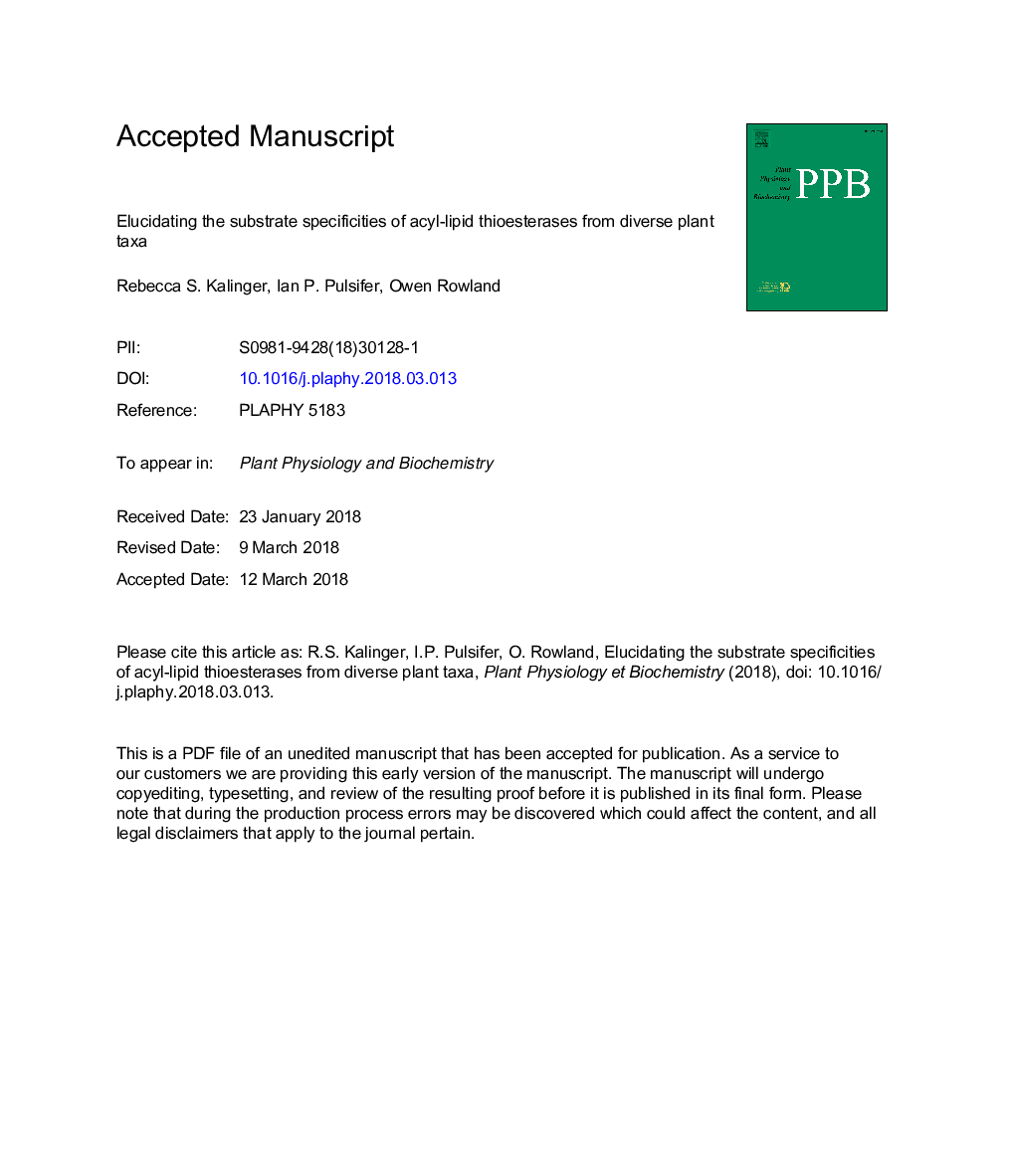| کد مقاله | کد نشریه | سال انتشار | مقاله انگلیسی | نسخه تمام متن |
|---|---|---|---|---|
| 8352963 | 1541894 | 2018 | 43 صفحه PDF | دانلود رایگان |
عنوان انگلیسی مقاله ISI
Elucidating the substrate specificities of acyl-lipid thioesterases from diverse plant taxa
ترجمه فارسی عنوان
توضیح خصوصیات سوبستات تیتی استرازهای آکیل-لیپید از تاکسون های مختلف گیاه
دانلود مقاله + سفارش ترجمه
دانلود مقاله ISI انگلیسی
رایگان برای ایرانیان
کلمات کلیدی
موضوعات مرتبط
علوم زیستی و بیوفناوری
علوم کشاورزی و بیولوژیک
دانش گیاه شناسی
چکیده انگلیسی
Acyl-ACP thioesterase enzymes, which cleave fatty acyl thioester bonds to release free fatty acids, contribute to much of the fatty acid diversity in plants. In Arabidopsis thaliana, a family of four single hot-dog fold domain, plastid-localized acyl-lipid thioesterases (AtALT1-4) generate medium-chain (C6-C14) fatty and β-keto fatty acids as secondary metabolites. These volatile products may serve to attract insect pollinators or deter predatory insects. Homologs of AtALT1-4 are present in all plant taxa, but are nearly all uncharacterized. Despite high sequence identity, AtALT1-4 generate different lipid products, suggesting that ALT homologs in other plants also have highly varied activities. We investigated the catalytic diversity of ALT-like thioesterases by screening the substrate specificities of 15 ALT homologs from monocots, eudicots, a lycophyte, a green microalga, and the ancient gymnosperm Gingko biloba, via expression in Escherichia coli. Overall, these enzymes had highly varied substrate preferences compared to one another and to AtALT1-4, and could be classified into four catalytic groups comprising members from diverse taxa. Group 1 ALTs primarily generated 14:1 β-keto fatty acids, Group 2 ALTs produced 6-10 carbon fatty/β-keto fatty acids, Group 3 ALTs predominantly produced 12-14 carbon fatty acids, and Group 4 ALTs mainly generated 16 carbon fatty acids. Enzymes in each group differed significantly in the quantities of lipids and types of minor products they generated in E. coli. Medium-chain fatty acids are used to manufacture insecticides, pharmaceuticals, and biofuels, and ALT-like proteins are ideal candidates for metabolic engineering to produce specific fatty acids in significant quantities.
ناشر
Database: Elsevier - ScienceDirect (ساینس دایرکت)
Journal: Plant Physiology and Biochemistry - Volume 127, June 2018, Pages 104-118
Journal: Plant Physiology and Biochemistry - Volume 127, June 2018, Pages 104-118
نویسندگان
Rebecca S. Kalinger, Ian P. Pulsifer, Owen Rowland,
